Display is a bookrest, stand and storage unit all in one. At home and at work, Display collects and keeps important papers and cards in full view on your desk. Digitalization has only made us less paperless than ever before. Display groups items together by category or keeps them separate – functioning as a three-dimensional clipboard for loose papers, notes and books, or as a permanent showcase for memorabilia. However we choose to understand ‘order’, Display offers us the overview and the detail, or it simply disappears under its load like a crowded shelf.
Jakob Timpe Display
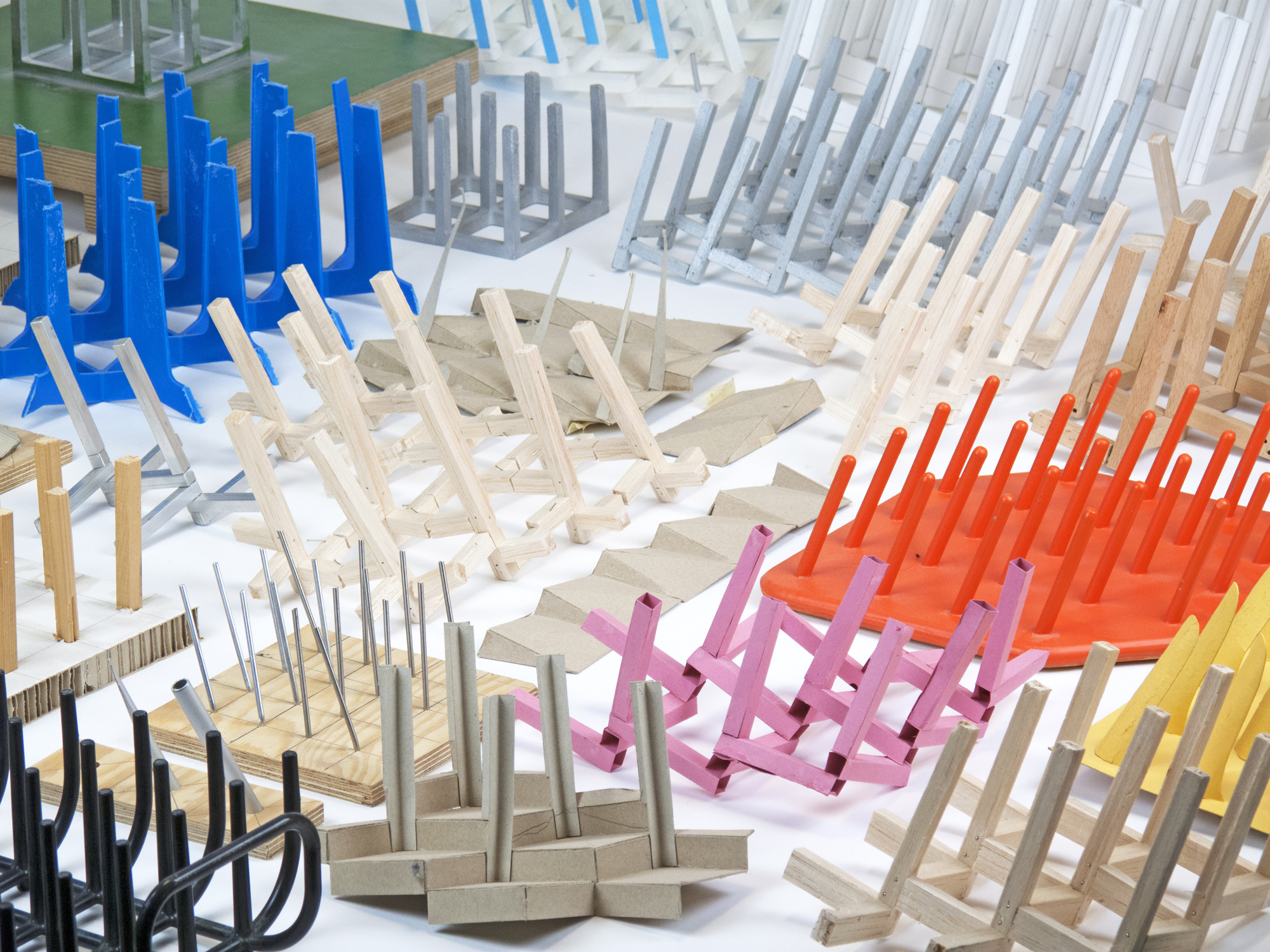

The tectonic miniature is made of high-precision milled beech rods, finished in clear, traffic orange or carbon gray lacquer. The essential characteristics (dimensions, angles, distances) of this original furnishing accessory were determined through experimental iterative modelling. Initially conceived as a single cast component, Display’s complex geometry evolved during a long process of prototyping and determination of user-requirements. The end result is a simple kit of timber modules (comprising one short and one long bar) mechanically jointed in the manner of angular tenons. The manufacturing process combines craftsmanship and digital manufacturing in a way that is innovative, sustainable and reminiscent of the Erzgebirge wood craft tradition. The barrel lacquering process is derived from pharmaceutical tablet coating technology, now available for non-medical applications and ideal for sharp-edged timber parts.
Even thick books sit well on Display, as the inclined bars and struts prevent sheering of the pages. This inclination is a functional as well as a structural necessity. The blind holes on the long vertical bars are arranged one above the other, similar to the connection of the legs and crossbars of timber rung chairs which are staggered to prevent interference between the perpendicular joints. The sketch by Friedrich David Gilly, a German representative of classicist revolutionary architecture, shows the reverse, classical tectonic equivalent: his “pillared hall on a slope” illustrates the layering of supports and loads (post and lintel) in steps that correspond to the incline of the slope.

© Alfred Rietdorf: Gilly. Wiedergeburt der Architektur, Berlin 1940.
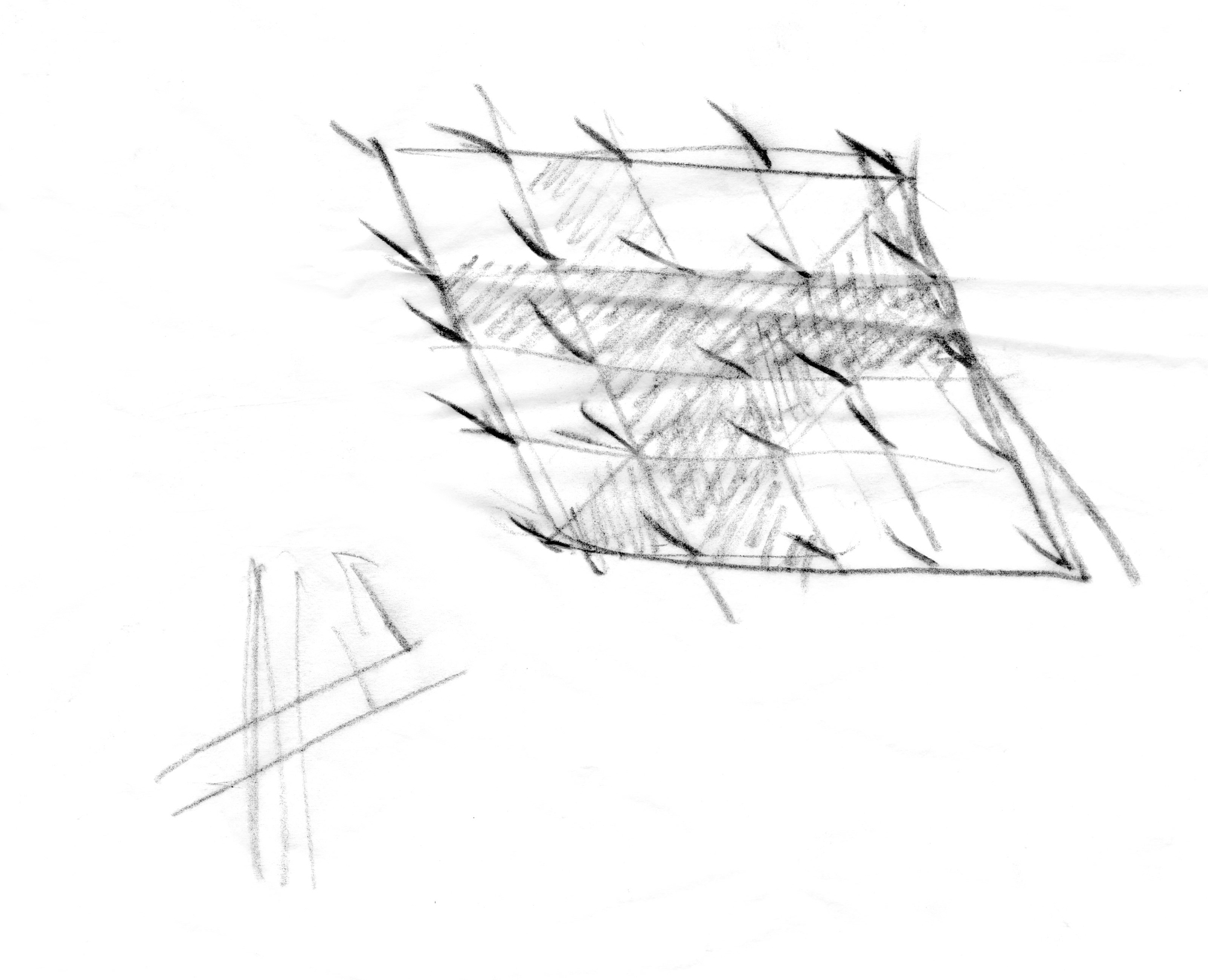

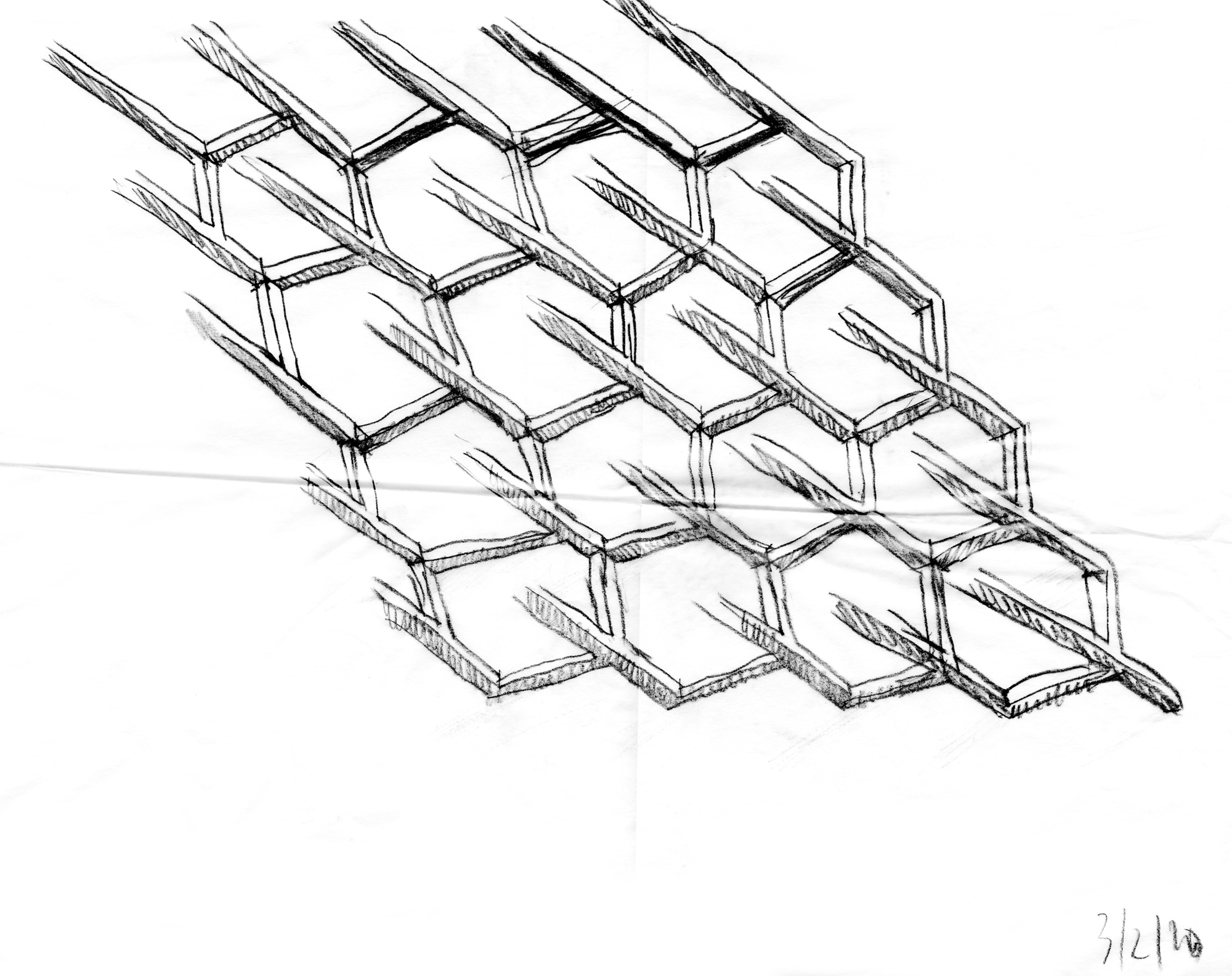

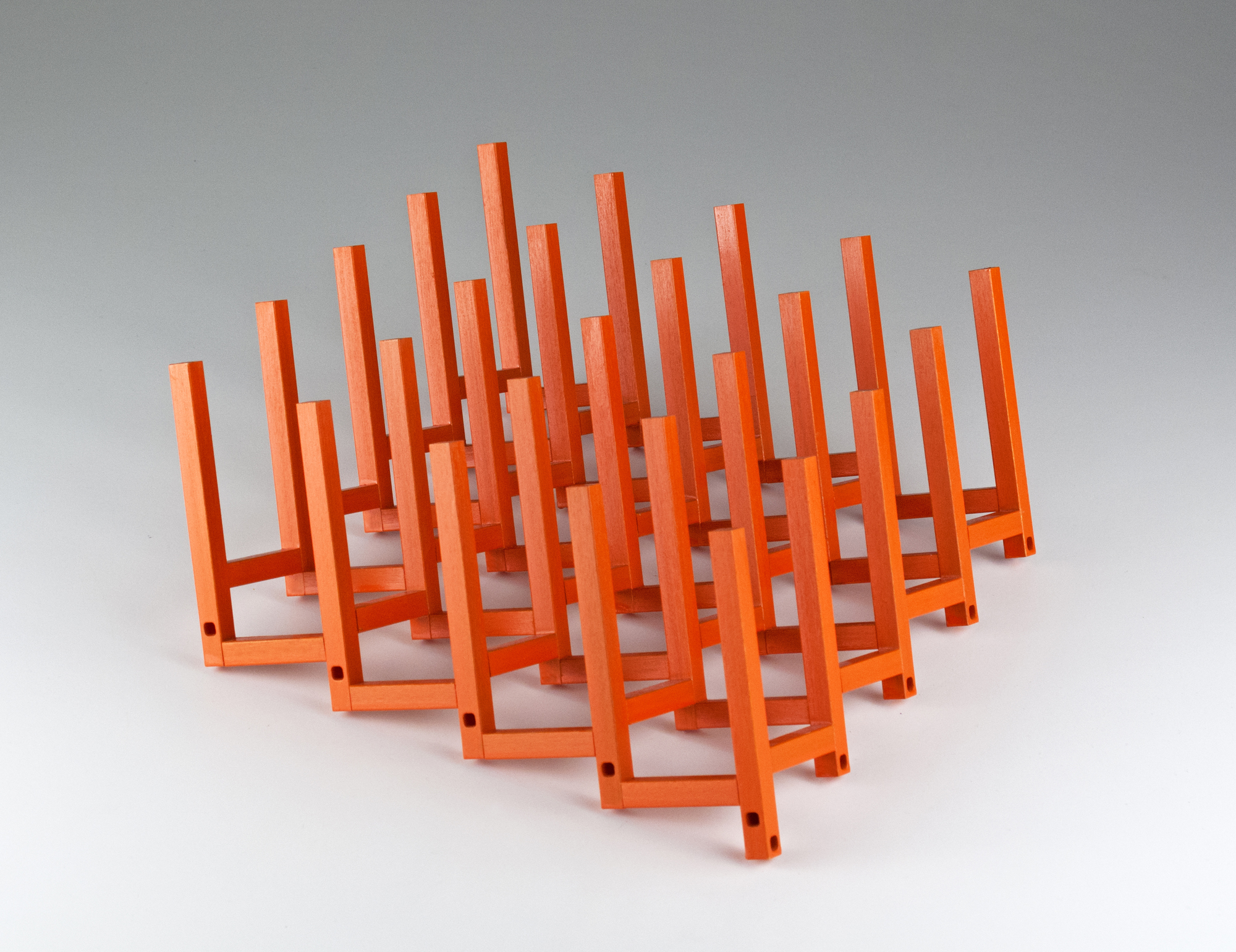

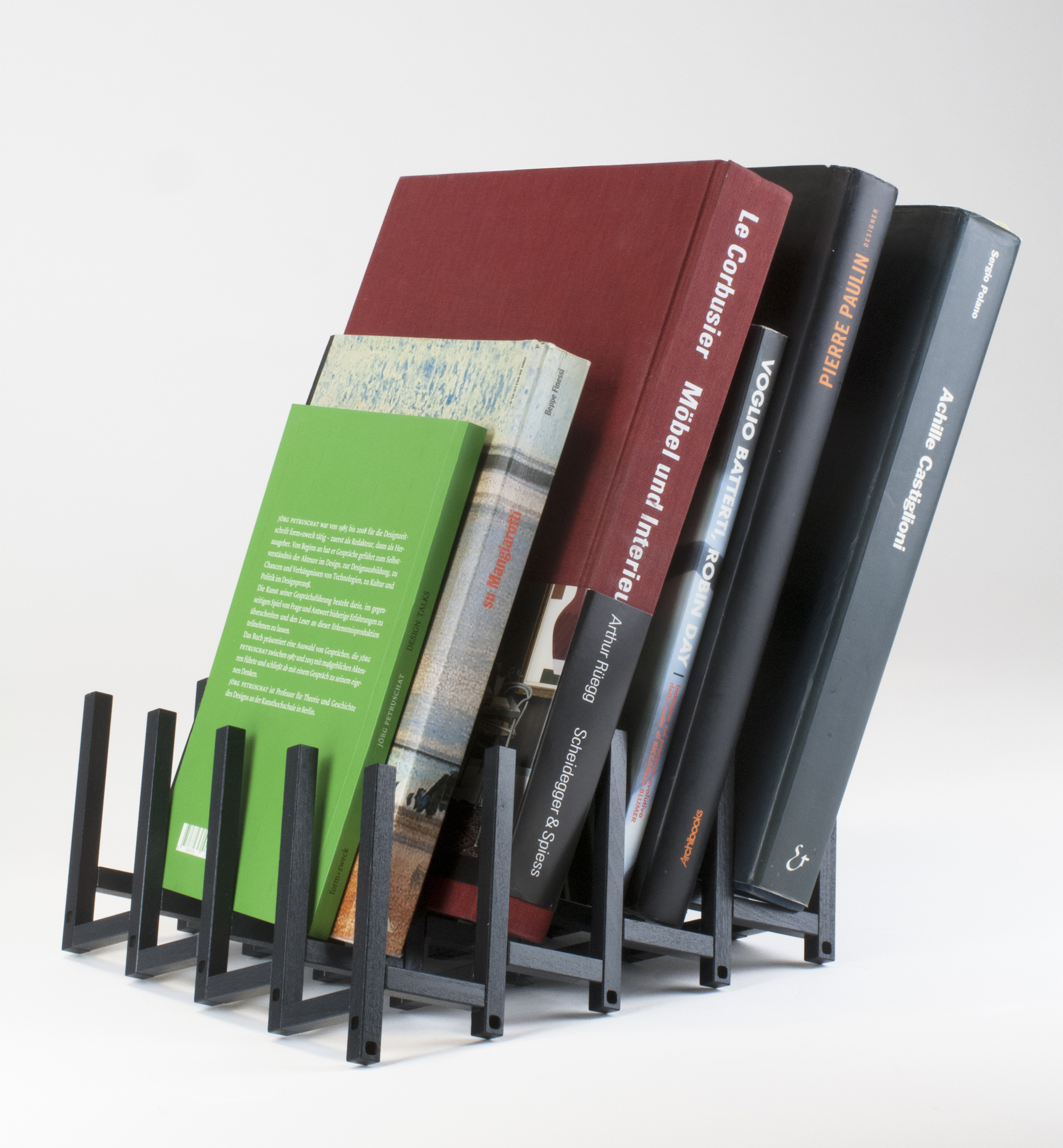

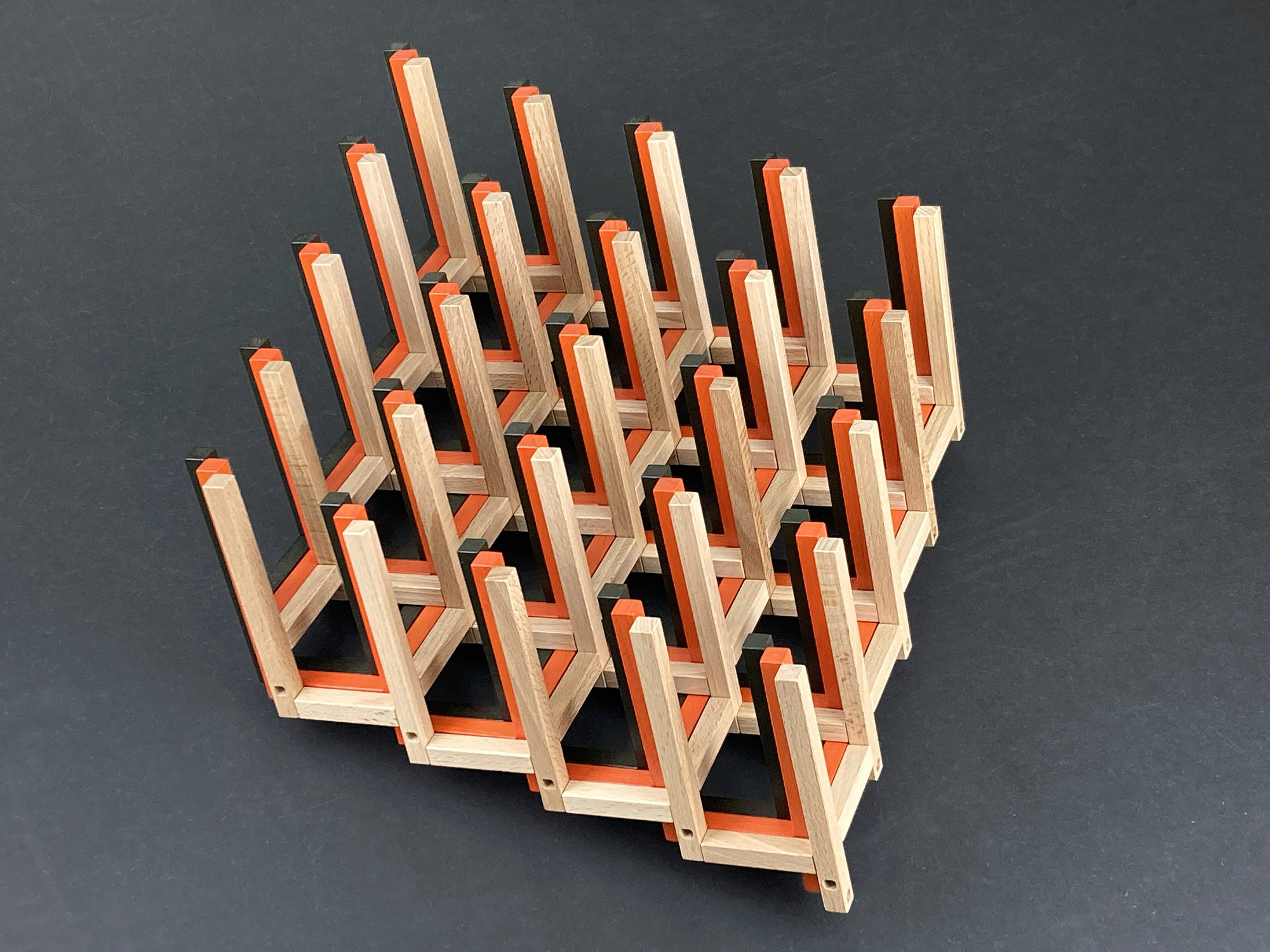
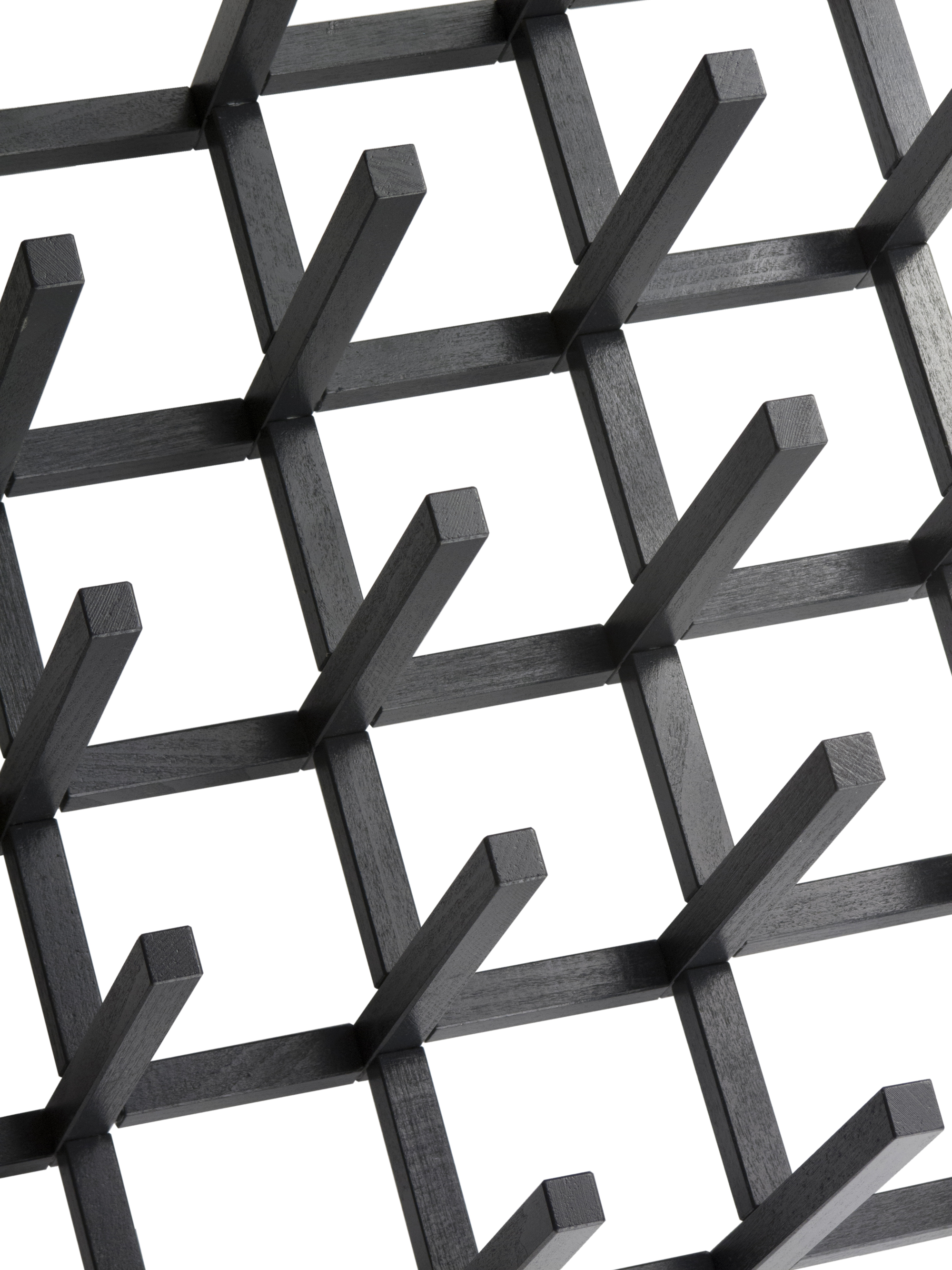
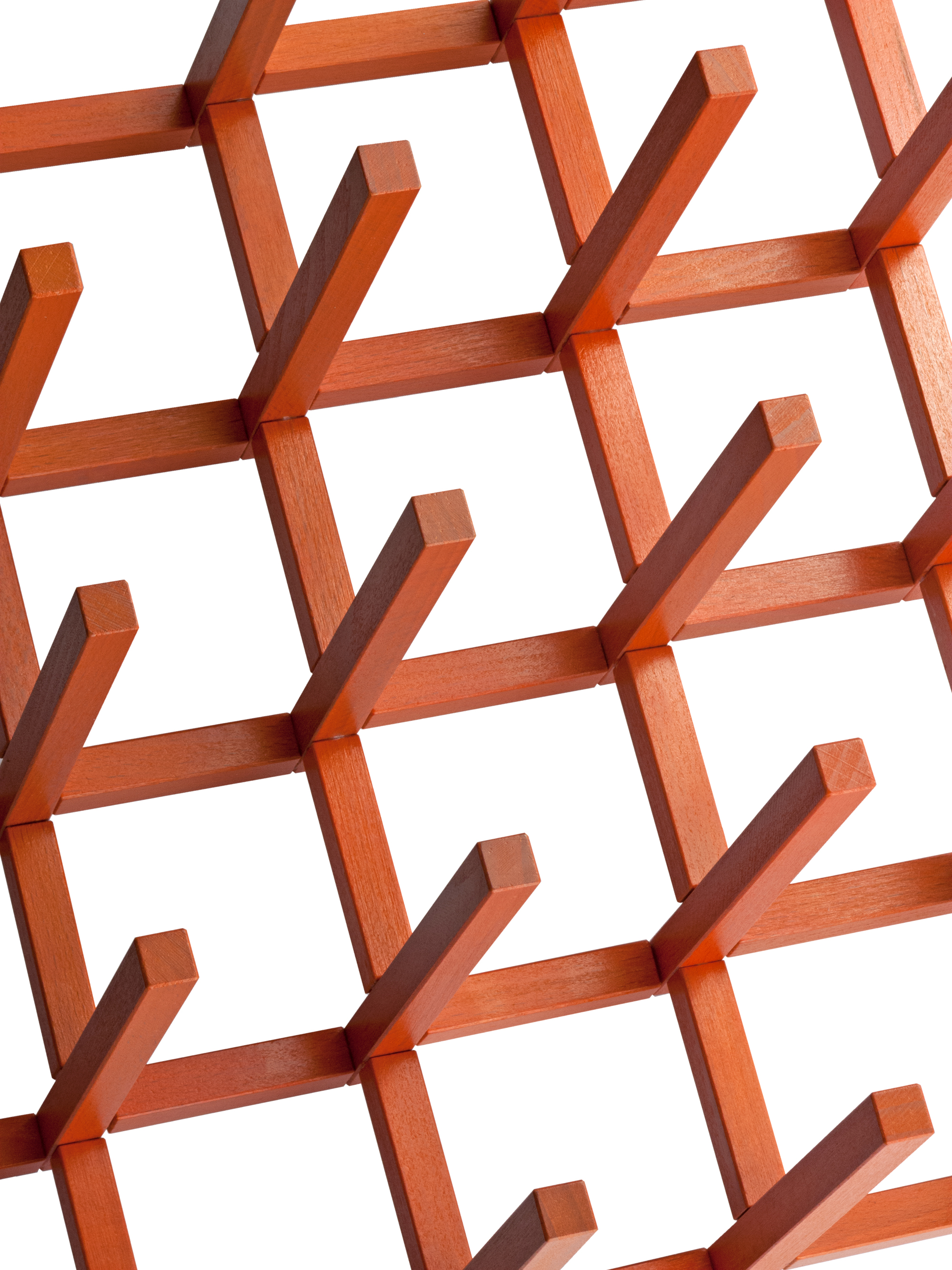
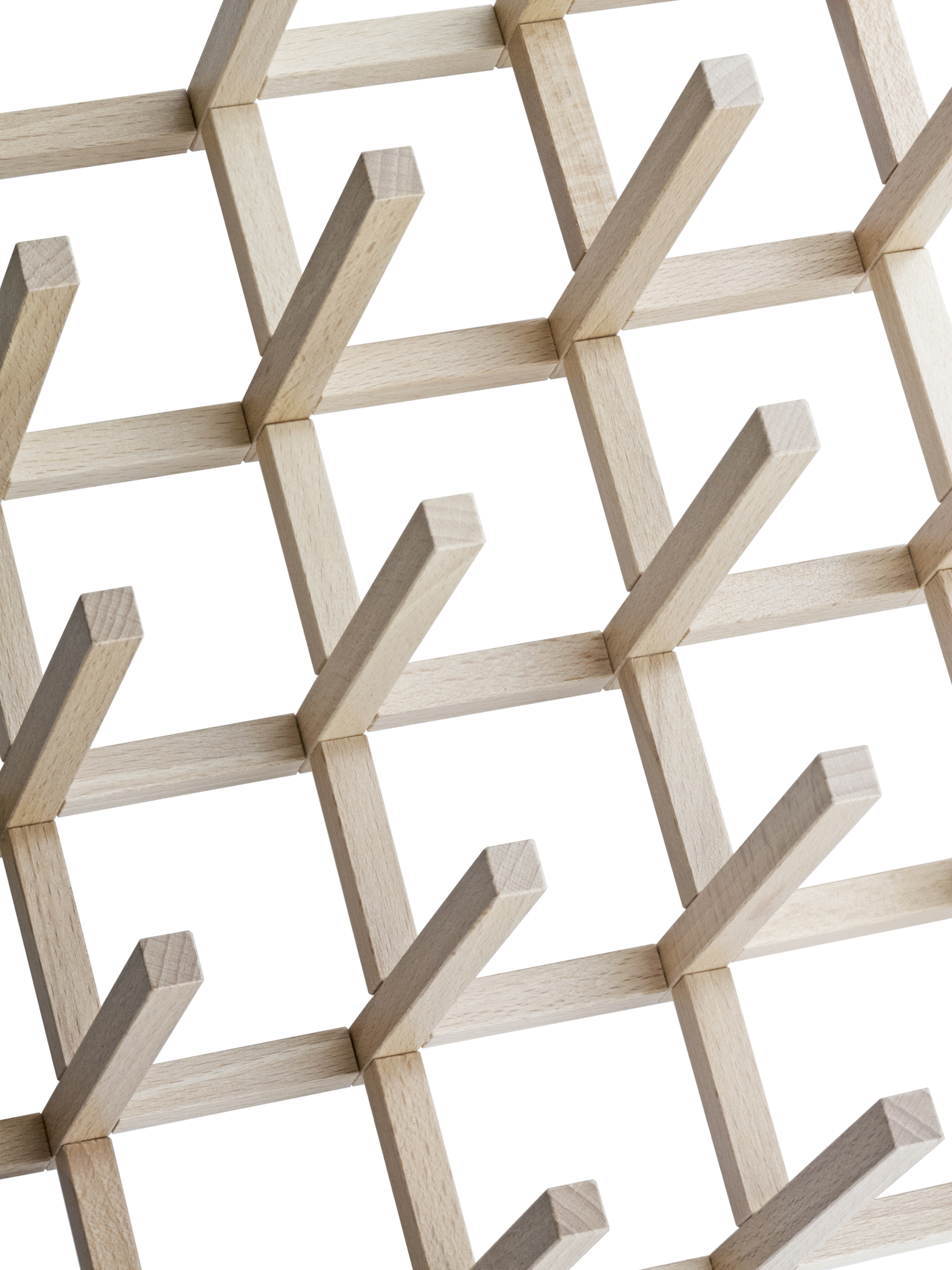
Other projects by Jakob Timpe




